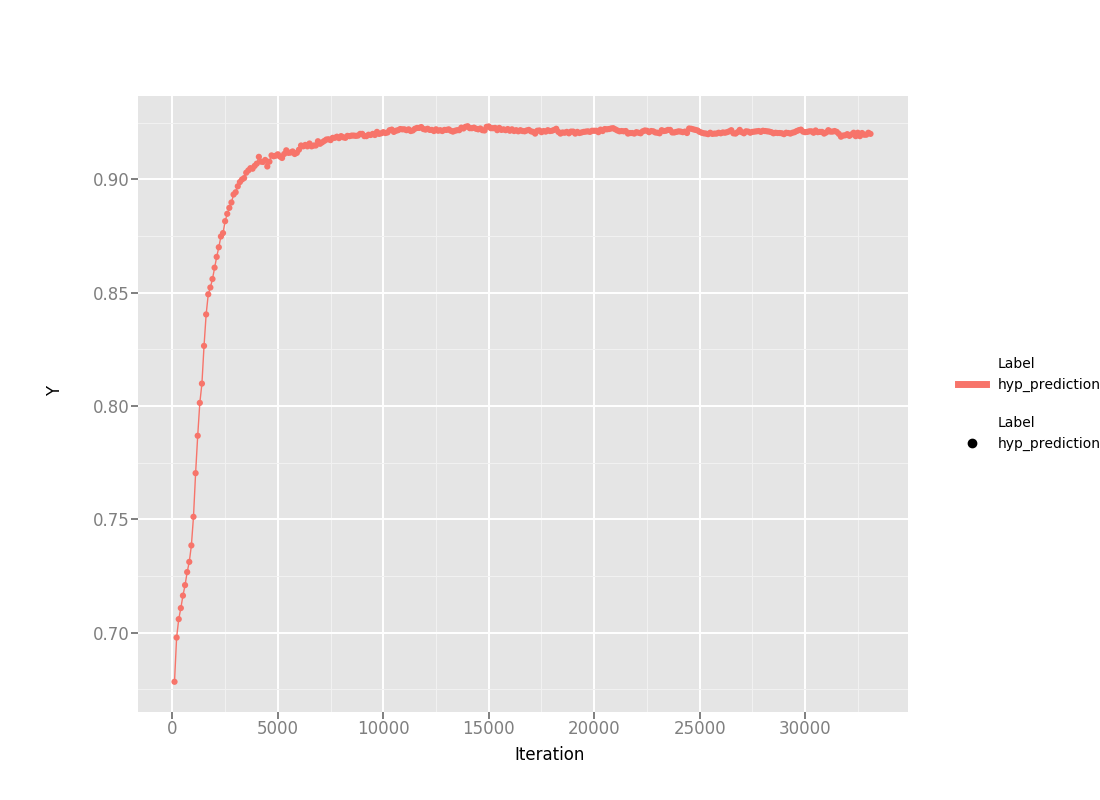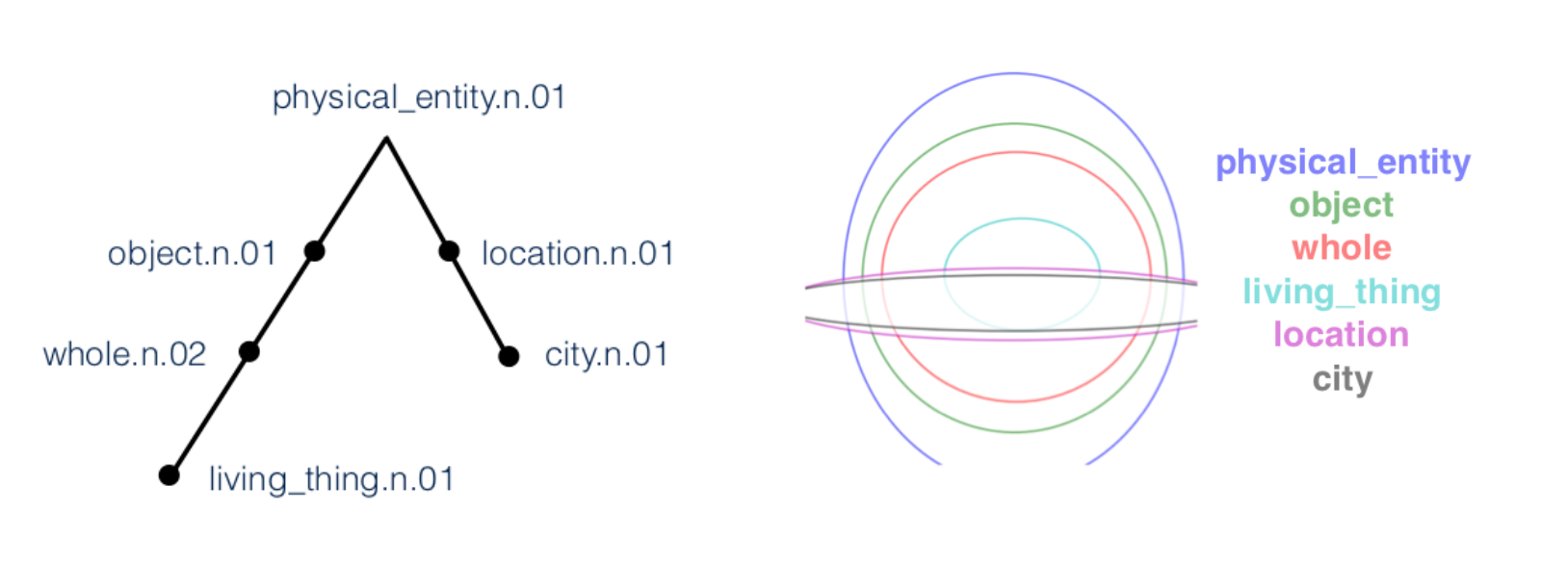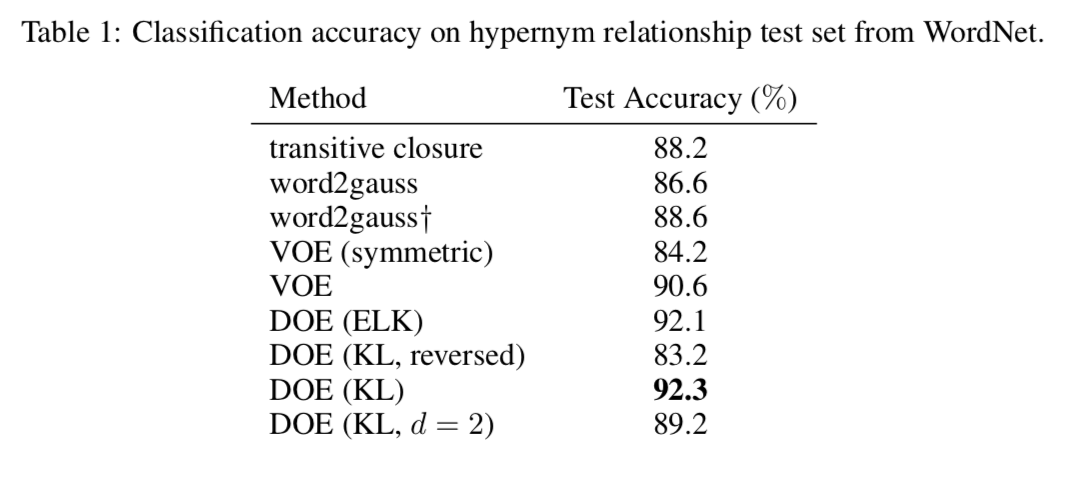This is an implementation of the model in Athiwaratkun and Wilson, Hierarchical Density Order Embeddings, ICLR 2018.
In this work, we learn Gaussian representations of concepts on hierarchical data (WordNet) using a loss function that penalize the order violation based on truncated divergences. The Gaussian representation reflects the hierarchy of the data via ensapsulation of probability densities. That is, a generic concept such as entity corresponds to a broad distribution, encompassing many different specific entities that entail it such as physical_entity or object.
The learned representations capture the hierarchy of the data well and achieves state-of-the-art results for both Hypernym prediction task and the graded lexical entailment task (HyperLex).
The BibTeX entry for the paper is:
@InProceedings{athiwilson_doe_2018,
author = {Ben Athiwaratkun and Andrew Gordon Wilson},
title = {Hierarchical Density Order Embeddings},
booktitle = {ICLR},
year = {2018}
}Below are the instructions to run the code to train and evaluate the density order embeddings model. Note: this code is partially adapted from https://github.com/ivendrov/order-embeddings-wordnet.
- Torch 7 with cutorch, nn, cunn, dpnn, hdf5
- Python 2.7 with NTLK 3.2.1 and Pytorch 0.2
python preprocessWordnet.py
th createDatasets.lua
th createDatasets.lua -s2 1 -s4 1
To train the model and perform prediction on the WordNet relationship prediction test set.
th main.lua --epochs 20 --name hyp_prediction --init_normalize --normalize --rep gauss --margin 2000 --varscale 0.00005 --kl_threshold 500 --hyp 1 | tee log/hyp_prediction.log
Note that the model files are saved in modelfiles/hyp_prediction.
The following plot shows the test accuracies versus training iteration.

The figure can be generated by the following command:
python plot_hyp_accuracies.py --pattern log/hyp_prediction.log --figname log/hyp_accuracies.png
th main.lua --epochs 50 --name hyperlex --init_normalize --normalize --rep gauss --margin 2000 --varscale 0.00005 --kl_threshold 500 --hyp 1 --train contrastive_trans_s1-1_s2-1_s4-1 | tee log/hyperlex.log
Download HyperLex dataset.
./prepare_hyperlex.sh
Evaluate the trained model in modelfiles/hyperlex by running:
python eval/eval_hyperlex.py --modeldir modelfiles/hyperlex --verbose 1
which yields the following output
Metric kl Spearman correlation is 0.591162001045 with pvalue 4.96616036411e-204
Metric dot Spearman correlation is 0.0801925229194 with pvalue 0.000188869520576
Metric elk Spearman correlation is 0.271476724097 with pvalue 7.47672809234e-38
Metric reversekl Spearman correlation is -0.106825864228 with pvalue 6.37003701385e-07


